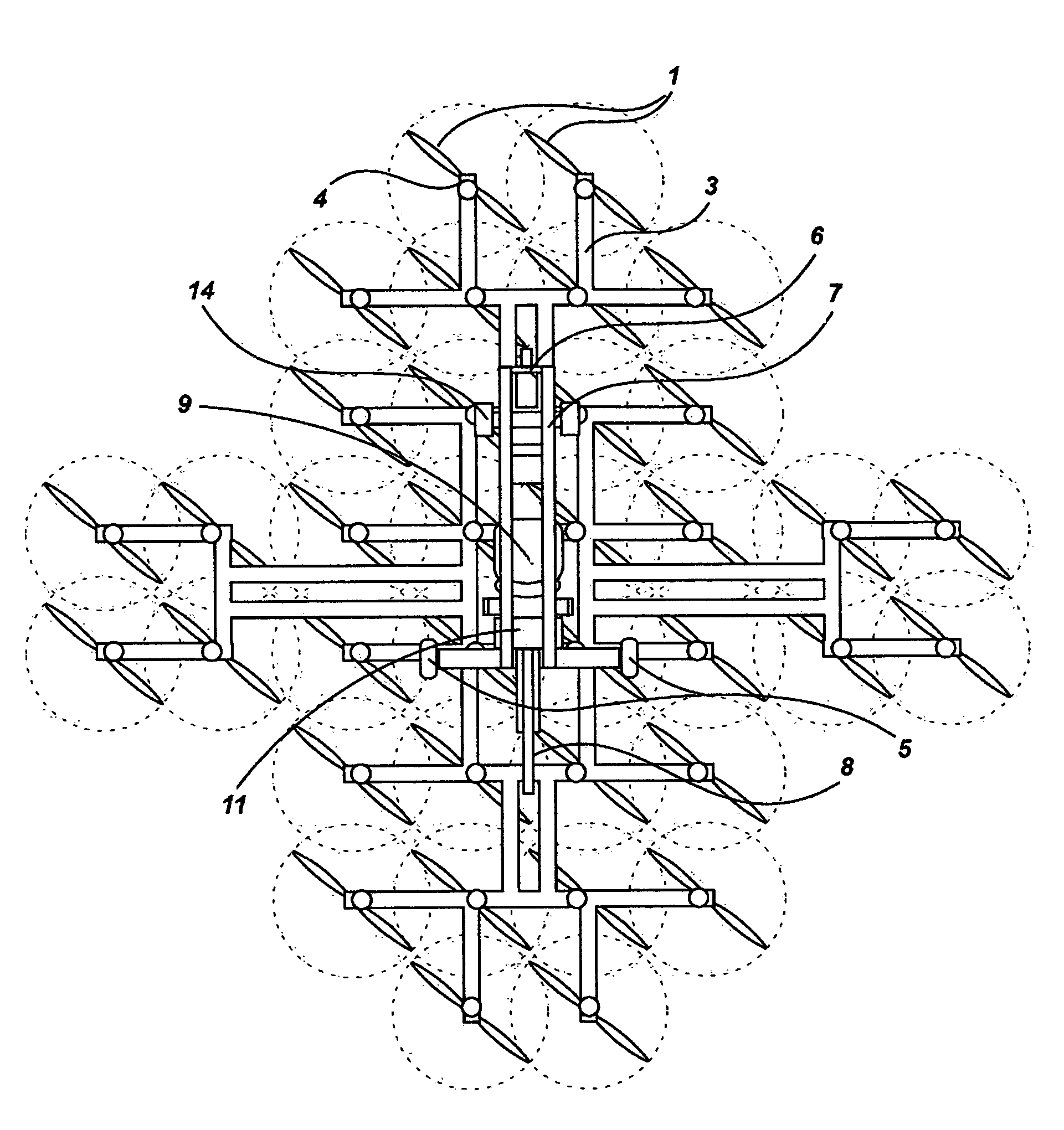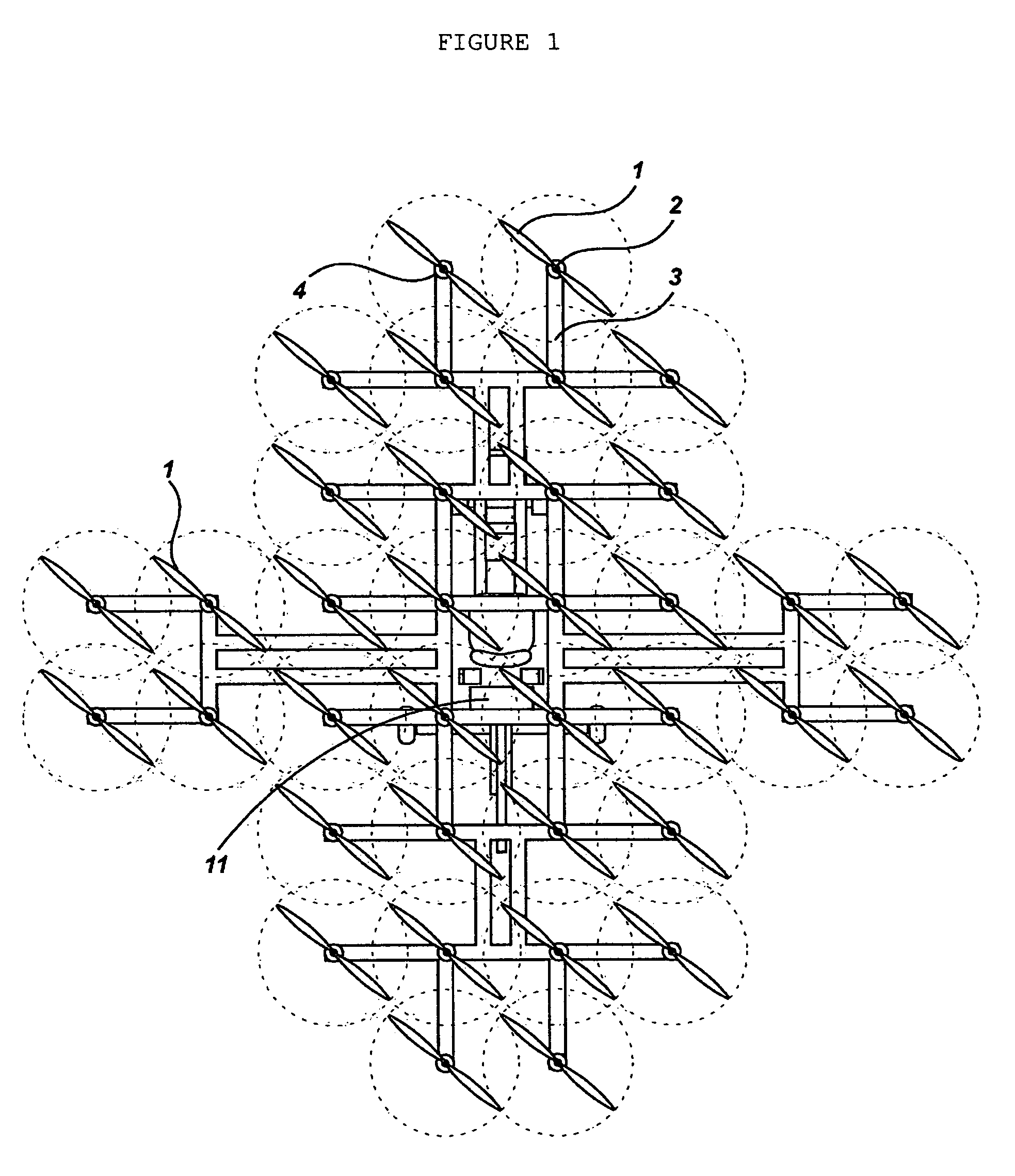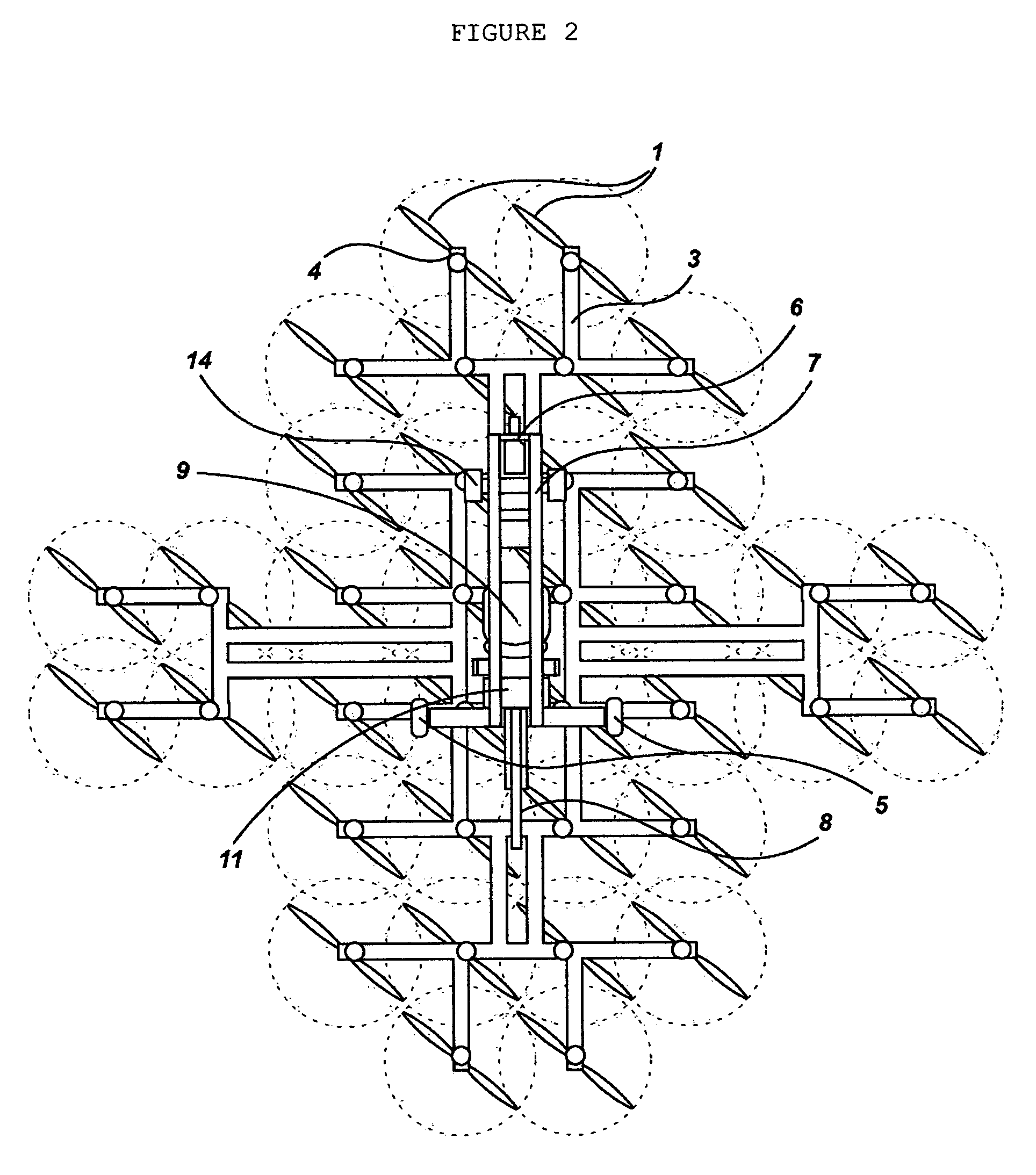Vertical takeoff and landing aircraft using a redundant array of independent rotors
a technology of vertical takeoff and landing and independent rotors, applied in the field of aircraft, can solve the problems of increasing complexity, difficult operation of classic helicopters, and high degree of mechanical complexity of classic helicopter control systems, and achieve the effect of convenient operation and maintenan
- Summary
- Abstract
- Description
- Claims
- Application Information
AI Technical Summary
Benefits of technology
Problems solved by technology
Method used
Image
Examples
Embodiment Construction
[0049]Anyone skilled in the art would agree that unless cyclic pitch were employed in a fixed rotor helicopter, a minimum of three lifting rotors would be required to allow simultaneous pitch and roll control. These three rotors would need to be arranged in an approximate equilateral triangle, with the center of gravity of the aircraft in general proximity to the center of the triangle. However, in this minimum configuration, the lack of appropriate thrust from just one rotor during flight would cause a catastrophic failure of the aircraft.
[0050]Therefore, a minimal embodiment of the present invention would include three redundant pairs, or 6 total thrust units arranged so that the failure of one thrust unit in a pair would allow the aircraft to continue operation.
[0051]The current embodiment employs 36 separate drive units for the Redundant Array of Independent Rotors (hereinafter “RAIR”). Any embodiment would incorporate a minimum of 6 units as 3 dual pairs, with a preferred embod...
PUM
 Login to View More
Login to View More Abstract
Description
Claims
Application Information
 Login to View More
Login to View More - R&D
- Intellectual Property
- Life Sciences
- Materials
- Tech Scout
- Unparalleled Data Quality
- Higher Quality Content
- 60% Fewer Hallucinations
Browse by: Latest US Patents, China's latest patents, Technical Efficacy Thesaurus, Application Domain, Technology Topic, Popular Technical Reports.
© 2025 PatSnap. All rights reserved.Legal|Privacy policy|Modern Slavery Act Transparency Statement|Sitemap|About US| Contact US: help@patsnap.com



